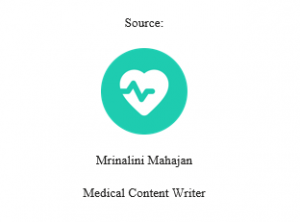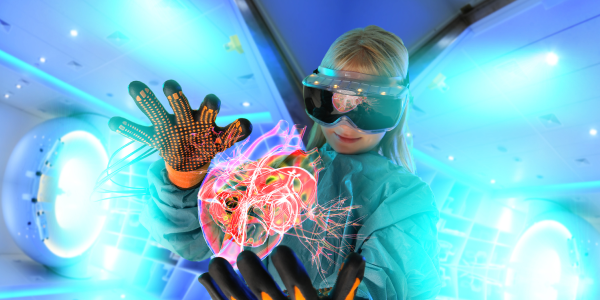[the_ad id=”6076″]
Healthcare is evolving continuously- from the widespread adoption of new trends and technologies to the ever-changing landscape of health-tech. Healthcare providers must be well-versed of the latest trends in the industry to stay ahead of the competition.
2023 is expected to strengthen the healthcare industry by making breakthrough discoveries and innovations. The main focus of health tech digital innovation is to boost the quality and affordability of healthcare services and predict and prevent conditions instead of treating them at advanced stages.
- Monitoring patients remotely:
One important segment in technology to keep on top of mind is the ability to monitor patients remotely. With the advancement in technology, digital health solutions are sure to improve patient outcomes in the future.
In 2023, it will be much easier and simpler to put a heart monitor on the patient for determining their health by being at home and updating all the data in one place. Healthcare providers can just glance through the vital statistics of their patients remotely.
- Transforming healthcare with artificial intelligence:
Artificial intelligence (A.I) is one of the most advanced healthcare trends which continues to bring evolvement in the upcoming years too. This holds the potential to significantly impact the industry, i.e., from improving patient care with data-driven clinical decision-making to streamlining the healthcare system. AI must be human-centered, considering the needs of patients and providers.
A.I impacts healthcare areas in terms of improving patientcare, enabling physicians to enhance their work performance, and supporting healthcare institutions to deliver quality care.
- Adopting robotics in healthcare:
This is one of the new healthcare trends where medical robotics holds the capability to reduce the workload in the healthcare industry. With automation and Artificial Intelligence, robotics devices mainly perform various tasks and support services- from facilitating the transport of patients and helping in surgeries and more.
In a developed country like Japan, robots assist nurses and healthcare workers in reception areas and also guide the patients to specific rooms. Robots perform numerous services such as monitoring needs, moving individuals, etc. The adoption of robotics in assisted living situations has the potential to reduce turnover for long-term healthcare results.
- Investing in mental health:
Mental health is one of the biggest healthcare megatrends. The global prevalence of anxiety and depression is increased by 25%. To help promote support and strengthen leadership for mental health, WHO has created a comprehensive mental health action plan 2013-2030 for improving mental health services. Investing in mental health solutions is on the rise. Some technology-assisted platforms enable more access to mental health services and also help patients connect with mental health providers.
- Monitoring health vitals through wearable devices:
Adopting wearable technology is one of the key trends of 2023 which is taking the healthcare industry by storm by helping individuals take control of their health. Continuous health monitoring via wearable devices enables personalized, data-driven care where healthcare providers take a proactive rather than reactive approach. Digital health software provides individuals with vital data and biomarkers which play a critical role in disease prevention.
- Boosting cloud technology:
Cloud computing is increasingly becoming available to patients and healthcare providers in the healthcare industry. By leveraging remotely available data, physicians and patients can easily access historical and recent clinical results in a single platform. Electronic health records are used widely, and cloud technology will become more cost-effective and secure and will also provide new opportunities for big data software.
Cloud technologies provide patients with a scalable way to provide optimize patientcare and allow patients for taking a proactive approach.
- Enhancing the utilization of telehealth system:
While telehealth is introduced for quite some time now, with limited access to healthcare workers, patients with non-emergency conditions can gain access to providers quicker. Telehealth systems allow patients to provide information to their providers with addressing concerns ranging from prescription change to various questions. Telehealth system provides more information about the patient in form of electronic health records. When linked to data from health wearables, telehealth enables the patient to remain proactive in their care which is crucial for chronic conditions such as cardiovascular disease and blood pressure.
Telehealth system ensures a safe and seamless user experience which can be an important differentiator for healthcare organizations.
- Improved patient engagement with online services like a portal:
This is an emerging trend for 2023 where people can take advantage of patient-accustomed portals which are connected to their doctor’s EHR system. The online software allows the patient to log into the system and perform activities such as requesting an appointment, ordering medicines, and more which is much faster than waiting on the phone to do such tasks.
Looking ahead to healthcare in 2023
Healthcare professionals have faced a huge challenge when it comes to offering affordability, enhancing, and easily accessible clinical services. JioHealthHub is a digital health platform that is designed to tightly integrate the delivery and discovery aspects of healthcare. In 2023, we are looking forward to a more settled but transformed healthcare ecosystem.
Innovation is always around the corner. These are some healthcare technology trends of 2023. Advanced technologies such as A.I, cloud computing, and more are just key trends that are taking the healthcare industry by storm. These ensure patient’s journey is secure, personalized, easy to navigate, and empowering. By highlighting the advancing areas and key trends one must focus on and invest in which can bring significant value.

